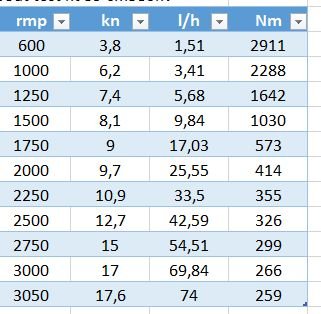Maybe this should be in a different thread, but I've a comment on the "cost of speed". I've calculated this for several vehicles, including my Nordic Tugs trawler. Here's the jist of it: If you are going a given speed and burning a given amount of fuel, how much would it cost if I changed the speed a little. Cost is in term of dollars per hour saved. In other words, what would it cost to get there an hour sooner? It is essentially the slope of the speed and fuel consumption lines. For my Nodic Tugs 32 at 1200 rpm and 6.8 kts it is $2 per hour. At 1300 and 7.4 kts it is $10 per hour. At the very top end, at 2500rpm and 16.2 kts it is $36 per hour saved. I would very much like any information anyone has on a similar boat, hopefully including actual fuel consumption data. My information is from a sheet I found on the boat, source and accuracy unknown. Thanks in advance.
The offset is cost of slow or value of time. To some, getting to a destination and having more time there isn't important. A day on the water is a day on the water. To others, it's very important. To a family boating on the weekend, it's priceless. To someone with 2 weeks vacation with their family it's of tremendous value. Looking at the above, I'd never use per hour savings as that assumes you're not intending to go as far. Rather I'd use the amount saved per mile. Ultimately you'd end up with something more like this, just arbitrary numbers I'm using.
10 knots, 5 gph, $4 diesel, cost per mile $2
15 knots, 15 gph, cost per mile $4
20 knots, 30 gph, cost per mile $6
So per 1000 miles,
Cost at 10 knots $2000, 100 hours
Cost at 15 knots $4000, 67 hours
Cost at 20 knots $6000, 50 hours
Cost 15 knots cost $2000 extra, saves 33 hours.
20 knots cost $4000 extra, saves 50 hours.
If you were financially analyzing it then is the value of 33 hours as much as $2000, $61 per hour. Is 50 hours worth $4000, $80 per hour.
Not to the casual boater who isn't in a hurry. However, to the doctor spending his only two weeks of the year with his family, definitely is.
Coming from my background, I can't stop valuing my time highly. I'm use to thinking that way.



